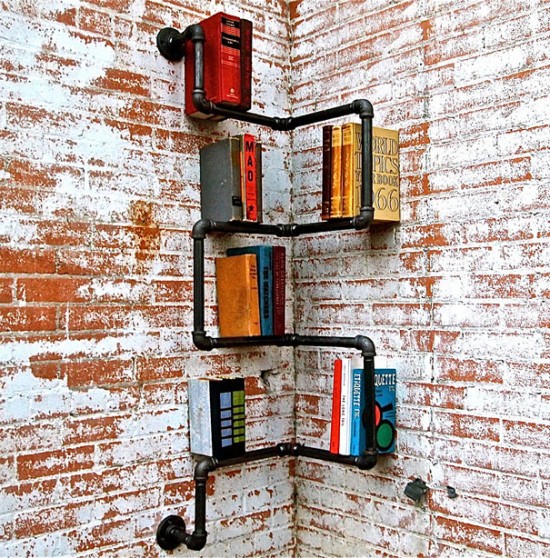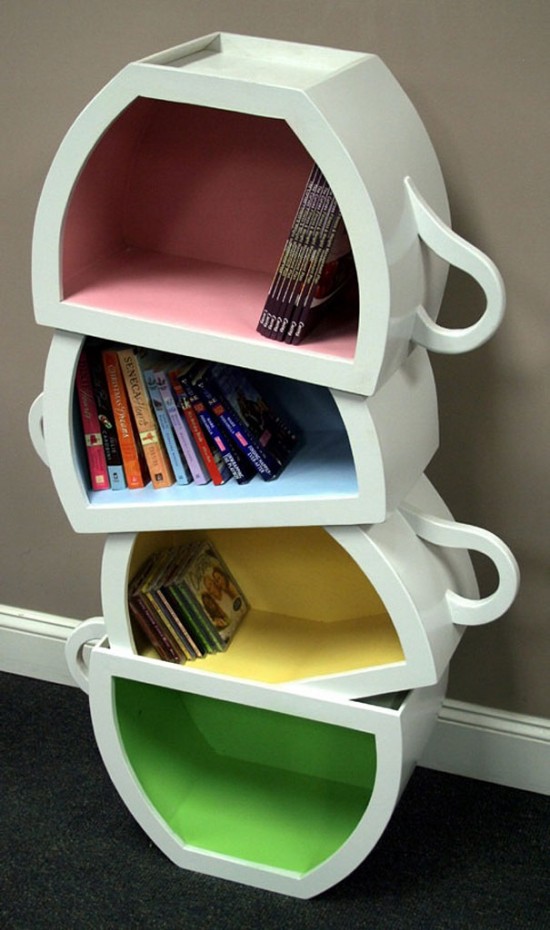click image for larger view.
source: visual.ly
Emmanuel Fonte | Music | Art | Leadership
If music be the food of love, play on. Emmanuel Fonte website is about music, art, real estate, architecture, design and decor. Occasionally, I talk about my other passion, hockey.
 The housing market recovery should continue through the coming years, assuming there are no further limitations on the availability of mortgage credit or a “fiscal cliff,” according to forecast presentations at a residential forum at the 2012 REALTORS® Conference and Expo.
The housing market recovery should continue through the coming years, assuming there are no further limitations on the availability of mortgage credit or a “fiscal cliff,” according to forecast presentations at a residential forum at the 2012 REALTORS® Conference and Expo.
Lawrence Yun, chief economist of the National Association of REALTORS®, said the housing market clearly turned around in 2012. “Existing-home sales, new-home sales and housing starts are all recording notable gains this year in contrast with suppressed activity in the previous four years, and all of the major home price measures are showing sustained increases,” he said.
“Disruption from Sandy likely will be temporary, notably in New Jersey and New York, but the market is likely to pick up speed within a few months with the need to build new homes in damaged areas,” Yun added.
Yun sees no threatening signs for inflation in 2013, but projects it to be in the range of 4 to 6 percent by 2015. “The huge federal budget deficit is likely to push up borrowing costs and raise inflation well above 2 percent,” he said.
Rising rents, qualitative easing (the printing of money), federal spending outpacing revenue, and a national debt equal to roughly 10 percent of Gross Domestic Product are all raising inflationary pressures.
Mortgage interest rates are forecast to gradually rise and to average 4.0 percent next year, and 4.6 percent in 2014 from the inflationary pressure.
With rising demand and an ongoing decline in housing inventory, Yun expects meaningfully higher home prices. The national median existing-home price should rise 6.0 percent to $176,100 for all of 2012, and increase another 5.1 percent next year to $185,200; comparable gains are seen in 2014.
“Real estate will be a hedge against inflation, with values rising 15 percent cumulatively over the next three years, also meaning there will be fewer upside-down home owners,” Yun said. “Today is a perfect opportunity for moderate-income renters to become successful home owners, but stringent mortgage credit conditions are holding them back.”
Existing-home sales this year are forecast to rise 9.0 percent to 4.64 million, followed by an 8.7 percent increase to 5.05 million in 2013; a total of about 5.3 million are seen in 2014.
New-home sales are expected to increase to 368,000 this year from a record low 301,000 in 2011, and grow strongly to 575,000 in 2013. Housing starts are forecast to rise to 776,000 in 2012 from 612,000 last year, and reach 1.13 million next year.
“The growth in new construction sounds very impressive, and it does mark a genuine recovery, but it must be kept in mind that the anticipated volume remains below long-term underlying demand,” Yun said. “Unless building activity returns to normal levels in the next couple years, housing shortages could cause home prices to accelerate, and the movement of home prices will be closely tied to the level of housing starts.”
“Home sales and construction activity depend on steady job growth, which we are seeing, but thus far we’ve only regained half of the jobs lost during the recession,” Yun said.
Yun projects growth in Gross Domestic Product to be 2.1 percent this year and 2.5 percent in 2013. The unemployment rate is showing slow, steady progress and is expected to decline to about 7.6 percent around the end of 2013. “Of course these projections assume Congress will largely avoid the ‘fiscal cliff’ scenario,” Yun said. “While we’re hopeful that something can be accomplished, the alternative would be a likely recession, so automatic spending cuts and tax increases need to be addressed quickly.”
Regardless, Yun said that four years from now there will be an even greater disparity in wealth distribution. “People who purchased homes at low prices in the past couple years, including many investors, can expect healthy growth in home equity over the next four years, while renters who were unable to get into the market will be in a weaker position because they are unable to accumulate wealth,” he said. “Not only will renters miss out on the price gains, but they’ll also face rents rising at faster rates.”
Also speaking was Mark Vitner, managing director and senior economist at Wells Fargo, who said the fiscal cliff is the biggest situation that needs to be addressed. “Beyond concerns about the fiscal cliff, the economic improvement seems to be broadening,” he said.
“Housing will strengthen in 2013 even if the economy weakens because there is a demand for more construction, and the demand for apartments is rising at a faster rate than the need for more single-family homes,” Vitner said. “Unfortunately, apartment construction is focused on about 15 submarkets, so additions to supply will be uneven.
Even with declining market shares of foreclosures and short sales, Vitner said they will continue. “Distressed homes right now are like an after-Christmas sale – most of the best stuff has been picked over, but make no mistake they’ll be with us for a while.”
Yun projects the market share of distressed sales will decline from about 25 percent in 2012 to 8 percent in 2014.
 When deciding whether or not to buy a home, one consideration will be the cost of alternative housing options. Renting an apartment is one such alternative. Where are rental prices heading over the next few years?
When deciding whether or not to buy a home, one consideration will be the cost of alternative housing options. Renting an apartment is one such alternative. Where are rental prices heading over the next few years?
Rental prices usually increase by about 3 percent annually. Trulia just released their Trulia Rent Monitor where they revealed that rental prices have increased dramatically in the last year.
“Nationally, rent gains continued to outpace home price increases in October, rising by 5.1 percent.”
Based on the concept of supply and demand, we believe rental prices will continue to substantially increase over the next few years. The long-run 30-year average increase in multifamily rental households is 200,000 each year. Over the next few years, those numbers will more than double to over 500,000 each year. Freddie Mac in their latest report, Multifamily Research Perspectives, projects housing demand going forward.
“Given assumptions consistent with economic growth slightly slower than long run averages, multifamily demand is likely to be in the range of 1.7 million net new renter households between now and 2015.”
The cost of owning a home will begin to increase as both prices and mortgage rates are expected to inch up in 2013. Perhaps now is the perfect time to lock in your long term housing expense by purchasing your own home.
by THE KCM CREW
 Luxury apartment dwellers can now park their automobiles right next to their high-rise properties, whether they live on the first or thirtieth floor. Singapore will open Hamilton Scotts, a luxury condominium that touts a sky garage, in the summer of 2013. Similar high-rise projects complete with the latest in auto parking include luxury properties in Sunny Isles Beach, Fla., and Manhattan’s West Chelsea neighborhood. Watch the Wall Street Journal video for details.
Luxury apartment dwellers can now park their automobiles right next to their high-rise properties, whether they live on the first or thirtieth floor. Singapore will open Hamilton Scotts, a luxury condominium that touts a sky garage, in the summer of 2013. Similar high-rise projects complete with the latest in auto parking include luxury properties in Sunny Isles Beach, Fla., and Manhattan’s West Chelsea neighborhood. Watch the Wall Street Journal video for details.
[pb_vidembed title=”” caption=”” url=”http://www.youtube.com/watch?v=zGOdjvVZQgQ” type=”yt” w=”600″ h=”338″]
 These innovative high-tech faucets will soon enough enter your home. Therefore it is important to remember that all the faucets you own now will be retro and worth a lot of money, so keep them. Take a look into the future.
These innovative high-tech faucets will soon enough enter your home. Therefore it is important to remember that all the faucets you own now will be retro and worth a lot of money, so keep them. Take a look into the future.






















2. Industrial Corner Pipe Shelf 
4. Malagana: Equilibrium Bookcase 
5. Handmade Stacked Teacup Shelve 
 There are mobile apps for every industry, including the housing sector. Here are several examples for tech-savvy households who are looking for additional tools at various stages of the homeownership journey.
There are mobile apps for every industry, including the housing sector. Here are several examples for tech-savvy households who are looking for additional tools at various stages of the homeownership journey.
For market snapshots & home search, the John L Scott Mobile App 2.0 is stellar. I’d be happy to help you with how to get the most out of it.
For the Pre-move: Photo Measures Lite by Big Blue Pixel, developed for iOS, takes your recorded measurements of the property’s spaces and pastes the data onto your pictures. A similar app for the Android is My Measures and Dimensions Lite by Mobile Software.
In the moving stage: Take the guesswork out of navigating the sea of boxes in your new home with Moving Van by Glimmer Design Limited. The application, available for iOS, allows the user to take a picture of the contents of each box, assign the box to a specific room of the house, and then look up each item after the move.
Once you’ve become the permanent resident owner of the house — Use Home Maintenance by POJO Software to schedule regular home maintenance tasks. Get reminders and track the date and costs of purchases and repairs.
Getting ready to transform a room — Use Mark On Call, developed by Apple for iOS, to plan and design a space from start to finish. Take pictures of individual pieces like furniture and accessories and then place them in a virtual design to preview the possibilities.
Need inspiration — Try HGTV Shelf, an application that places photos, tips, and DIY projects for the home and garden at your fingertips.
Copyright © 2016-2024All Rights Reserved
Powered by Wordpress Web Design on the Genesis Framework